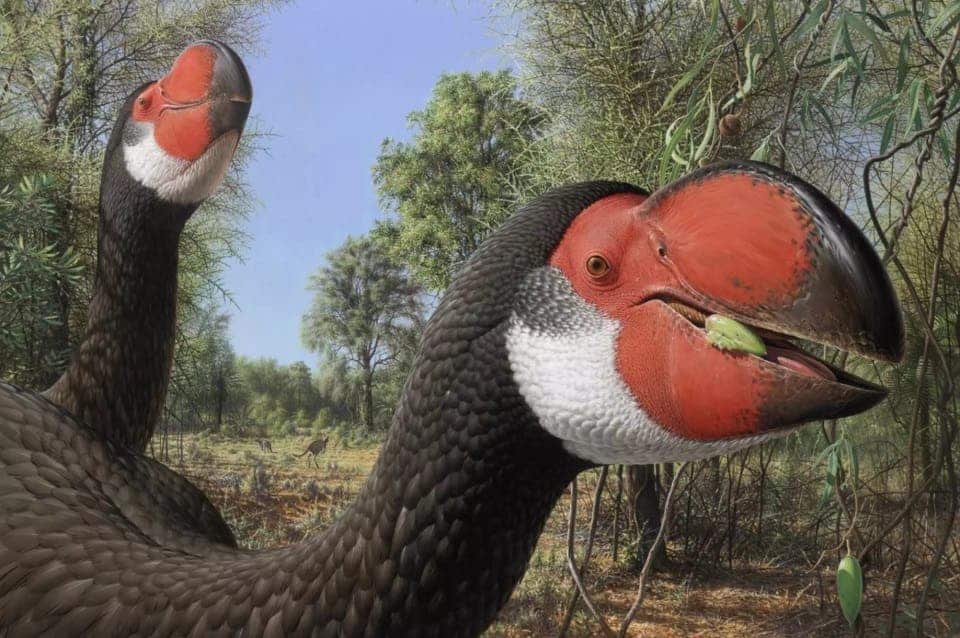
The Australian outback was once home to one of the largest flightless birds to have ever walked the Earth, the goose-like Dromornis stirtoni. The huge bird weighed up to 600kg (1,300 pounds), stood up to 3 meters (10 feet), and had a head about half a meter long (1.7 feet) — but despite the whooping head, its brain was squeezed for space, a new study says.
An extreme evolutionary experiment
Dromornis stirtoni is the largest of the ‘mihirungs’, an Aboriginal word for ‘giant bird’. It’s the largest flightless bird that we know of, tied with Madagascar’s elephant bird (Aepyornis maximus) — a flightless cousin of the ostrich, which went extinct in the 17th century due to human hunting.
The story of Dromornis stirtoni, which was first discovered in fossil-rich Alcoota site, 200 kilometres north-east of Alice Springs, in the 1960s, is an interesting one. For decades scientists mistakenly believed it was distant relative of the emu because the leg bones were similar to those of emus. But thanks to later digs that led to the discovery of Dromornis skulls at the site, it was instantly clear that this species belonged to dromornithids, a family unique to Australia and completely unrelated to emus. Its cranium was wider and higher than it was long due to a powerful big beak. It went extinct around 50,000 years ago.

Now, in a new study published today in the journal Diversity, scientists have taken a closer look at the Dromornis skull, gaining new insights into how this marvelous bird must have behaved and interacted with its environment.
“The shape of their brains and nerves have told us a lot about their sensory capabilities, and something about their possible lifestyle which enabled these remarkable birds to live in the forests around river channels and lakes across Australia for an extremely long time,” lead author Dr. Warren Handley, a researcher at Flinders University in Australia.
Using modern imaging methods such as neutron CT scanning technology, the researchers were able to determine the size and shape of the extinct bird’s brain. The researchers scanned and compared the brain structures of four mihirungs – from the earliest Dromornis murrayi at about 24 million years ago (Ma) to Dromornis planei and Ilbandornis woodburnei from 12 Ma and Dromornis stirtoni, at 7 Ma. Dromornis stirtoni was the largest and last bird in its lineage, which the Australian researchers referred to as an “extreme evolutionary experiment.”
Due to its massive bill, the bird had to accommodate large muscles, which squeezed the cranium until it became taller and wider than it was long. Likewise, the brain encased within was squeezed and flattened to fit inside.
Along with its large, forward-facing eyes and unusually large bills, the shape and nerves of the brain suggest that Dromornis had a very well-developed stereoscopic vision, meaning it could perceive depth similarly to humans.
According to the researchers, Dromornis ate a diet of fruit and leaves, and its brains and nerves resemble those of modern-day chickens and the Australian mallee fowl.
“The unlikely truth is these birds were related to fowl – chickens and ducks – but their closest cousin and much of their biology still remains a mystery,” says vertebrate palaeontologist and senior author Associate Professor Trevor Worthy. “While the brains of dromornithids were very different to any bird living today, it also appears they shared a similar reliance on good vision for survival with living ratities such as ostrich and emu.”


